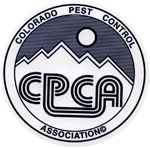Pest Library - Beetles

Beetles are the group of insects with the largest number of known species. They are classified in the order Coleoptera, which contains more described species than in any other order in the animal kingdom, constituting about 25% of all known life-forms. 40% of all described insect species are beetles (about 350,000 species), and new species are frequently discovered. Estimates put the total number of species, described and undescribed, at between 5 and 8 million. The largest family also belongs to this order-the weevils, or snout beetles, Curculionidae.
Beetles can be found in almost all habitats, but are not known to occur in the sea or in the polar regions. They interact with their ecosystems in several ways. They often feed on plants and fungi, break down animal and plant debris, and eat other invertebrates. Some species are prey of various animals including birds and mammals. Certain species are agricultural pests, such as the Colorado potato beetle Leptinotarsa decemlineata, the boll weevil Anthonomus grandis, the red flour beetle Tribolium castaneum, and the mungbean or cowpea beetle Callosobruchus maculatus, while other species of beetles are important controls of agricultural pests. For example, beetles in the family Coccinellidae ("ladybirds" or "ladybugs") consume aphids, scale insects, thrips, and other plant-sucking insects that damage crops.
Beetles as Pests
Many agricultural, forestry, and household insect pests are beetles. These include the following:

Pine Beetle Damage to Pine Tree
- The Colorado potato beetle, Leptinotarsa decemlineata, is a notorious pest of potato plants. Crops are destroyed and the beetle can only be treated by employing expensive pesticides, many of which it has begun to develop resistance to. As well as potatoes, suitable hosts can be a number of plants from the potato family (Solanaceae), such as nightshade, tomato, aubergine and capsicum.
- The Boll Weevil, Anthonomus grandis, has cost cotton producers in the United States billions of dollars since it first entered that country. The bark beetles Hylurgopinus rufipes and Scolytus multistriatus, the elm leaf beetle, Pyrrhalta luteola, and other beetles attack elm trees. The bark beetles are important elm pests because they carry Dutch elm disease as they move from infected breeding sites to feed on healthy elm trees. The spread of the fungus by the beetle has led to the devastation of elm trees in many parts of the Northern Hemisphere, notably in Europe and North America.
- Red flour beetle, Tribolium castaneum. Flour beetles are pests of cereal silos. They feed on wheat and other grains and are adapted to survive in very dry environments. They are a major pest in the agricultural industry and are highly resistant to insecticides.
- The Death Watch Beetle, Xestobium rufovillosum, (family Anobiidae) is of considerable importance as a pest of older wooden buildings in Great Britain. It attacks hardwoods such as oak and chestnut, always where some fungal decay has taken or is taking place. It is thought that the actual introduction of the pest into buildings takes place at the time of construction.
- Asian Long-horned Beetle
- Citrus Long-horned Beetle
- Rose Chafer, Macrodactylus subspinosus
- Western Corn Rootworm
- Coconut Hispine Beetle, Brontispa longissima, feeds on young leaves and damages seedlings and mature coconut palms. On September 27, 2007, Philippines' Metro Manila and 26 provinces were quarantined due to having been infested with this pest (to save the $800-million Philippine coconut industry).
- The Mountain Pine Beetle normally attacks mature or weakened lodgepole pine. Under the right circumstances outbreaks make it the most destructive insect pest of mature pine forests. The current infestation in British Columbia is the largest Canada has ever seen.


